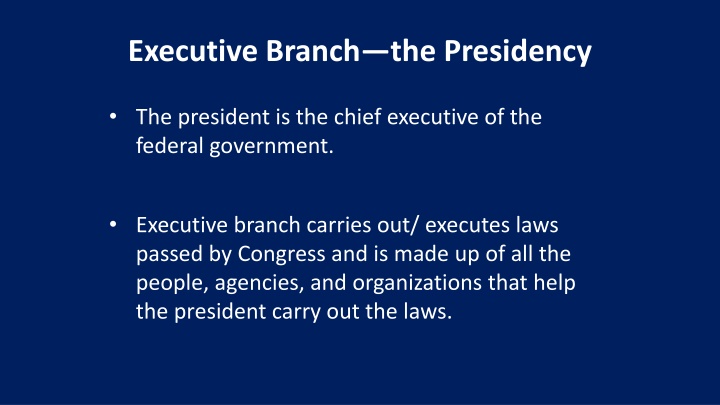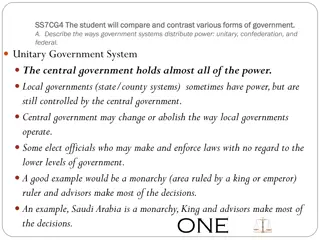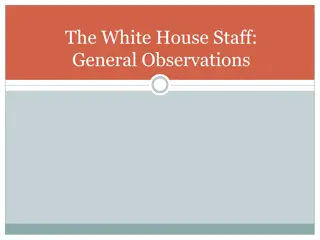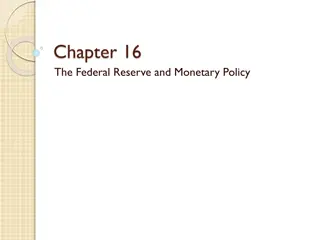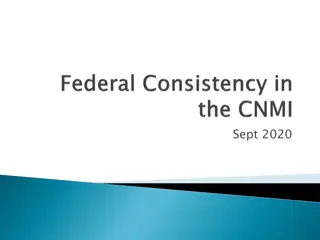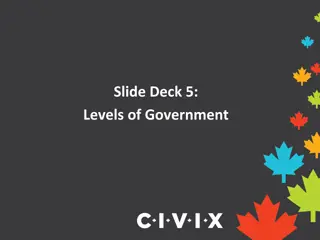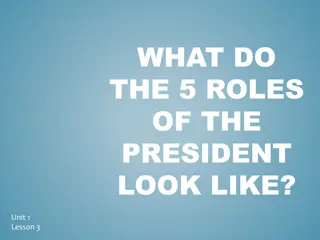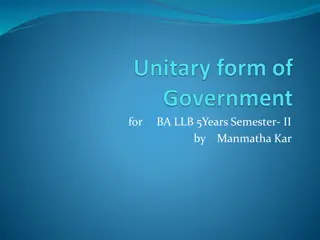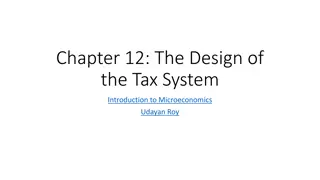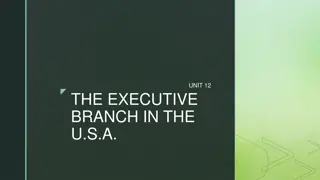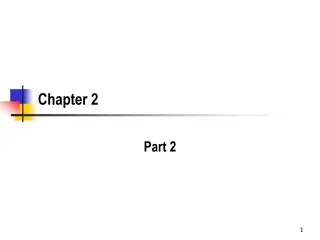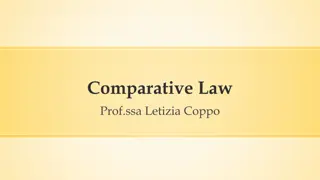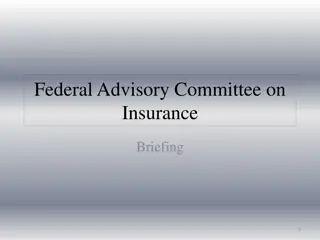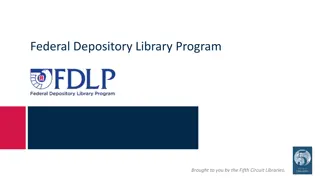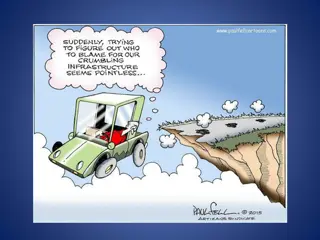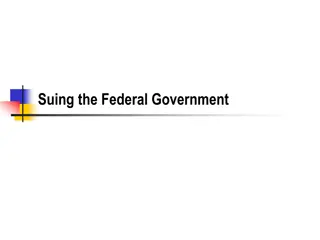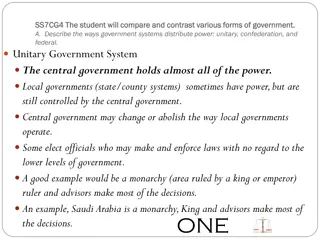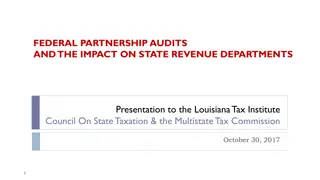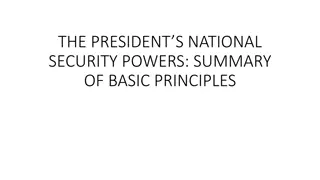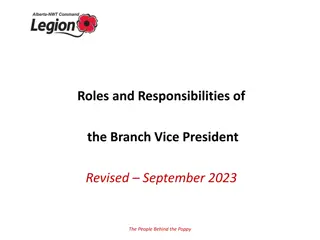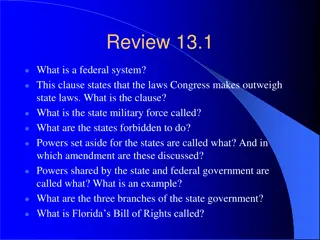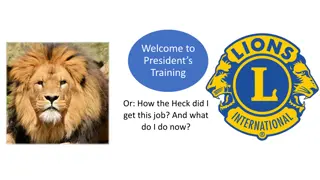Role of the President in the Federal Government
The President in the executive branch executes laws, serves a four-year term, and must meet specific eligibility criteria. The Vice President has key duties, and the President holds constitutional powers, assuming authority over time.
Download Presentation

Please find below an Image/Link to download the presentation.
The content on the website is provided AS IS for your information and personal use only. It may not be sold, licensed, or shared on other websites without obtaining consent from the author.If you encounter any issues during the download, it is possible that the publisher has removed the file from their server.
You are allowed to download the files provided on this website for personal or commercial use, subject to the condition that they are used lawfully. All files are the property of their respective owners.
The content on the website is provided AS IS for your information and personal use only. It may not be sold, licensed, or shared on other websites without obtaining consent from the author.
E N D
Presentation Transcript
Executive Branchthe Presidency The president is the chief executive of the federal government. Executive branch carries out/ executes laws passed by Congress and is made up of all the people, agencies, and organizations that help the president carry out the laws.
Executive Branchthe Presidency The president serves a four year term in office. The 22nd Amendment (1951) limits the presidency to two terms (10 years at most if a president succeeds another president mid- term).
Executive Branchthe Presidency Eligibility for President & Vice President 1) Must be a natural born citizen of the U.S. 2) Must be at least 35 years old 3) Must be a resident of the U.S. for at least 14 years Source:http://guides.library.msstate.edu/content.php ?pid=17181&sid=116358 Source:http://en.wikipedia.org/wiki/Federal_governm ent_of_the_United_States
Vice President 2 Main Duties of Vice President 1) Replace the president in office if he/she dies or becomes disabled. 2) President of the Senate. Does not vote in the Senate unless there is a tie.
Constitutional Powers of the President Carry out and enforce laws. Make treaties with foreign nations Nominate certain important government officials Act as commander-in-chief of the armed forces Veto laws passed by Congress
Presidential Authority Assumed Over Time Executive Powers Run the executive branch (federal bureaucracy) Direct actions of Cabinet members Approve or disapprove department or agency regulations Hire and fire key administrators
Presidential Authority Assumed Over Time Emergency Powers Make decisions during times of war, rebellion, crisis, or threat of terrorism Budgetary Powers Create a budget for the federal government (presented to Congress for approval or disapproval)
Presidential Authority Assumed Over Time Policy-making Powers Congress has voluntarily given executive branch powers to add details to the general laws passed by Congress. President can set goals for the nation and decide how to carry them out.
Executive Branchthe Cabinet Cabinet important group of policy advisors who make suggestions to the president about how to run the government and what actions to take Cabinet includes the heads of the executive departments and other advisors the president may choose All Cabinet departments report directly to, and serve at the pleasure of, the president.
15 Cabinet Departments 1) Dept. Agriculture (1862) 2) Dept. Commerce (1908) 3) Dept. Defense (1789) 4) Dept. Education (1953) 5) Dept. Energy (1977) 6) Dept. Health & Human Services (1979) 7) Dept. Homeland Security (2002) 8) Dept. Housing & Urban Development (1965) 9) Dept. Interior (1849) 10)Dept. Justice (1870) 11)Dept. Labor (1903) 12)Dept. State (1789) 13)Dept. Transportation (1966) 14)Dept. Treasury (1789) 15)Dept. Veterans Affairs (1989)
Power of the Presidency The President of the United States is clearly the most powerful individual in the entire federal government Examples: President controls the armed forces, the CIA, the FBI, the IRS, and the Treasury Department.
Political PartiesDemocratic Party Origins date back to Thomas Jefferson, James Madison and others as early as 1789 (officially 1824) Democratic Party Symbol Donkey: First associated with Andrew Jackson (Democrat) in the 1828 presidential campaign. His opponents called him a jackass (donkey).
Political PartiesDemocratic Party Jackson chose to use the image of the strong- willed animal on his campaign posters. Andrew Jackson (D) 7th President (1829-1837) Source: http://www.biography.com/people/andrew- jackson-9350991 Source:http://www.sodahead.com/united-states/should-the-democratic-party- change-their-partys-symbol-or-keep-it/question- 2461225/?link=ibaf&q=&imgurl=http://images.sodahead.com/polls/002461225/5 341560091_donkey_democrat_logo20ucoedu__xlarge.jpeg
General Democratic Party Beliefs Democrats are generally more liberal in their views: Support an active role for government in society believe government can/should improve the quality of people s lives and help achieve opportunity and equality. Support for civil rights Tolerance for political and social change
Political PartiesRepublican Party Founded in 1854 by abolitionists (anti-slavery), strong supporters of U.S. expansion, and those who favored new ideas and technologies to help business and society. First Republican president Abraham Lincoln (1860) Source: http://theiowarepublican.com/2011/thanksgiving-proclamation-by-president- abraham-lincoln/
Political PartiesRepublican Party Republican Party Symbol Elephant: First appeared in a political cartoon in Harpers Weekly in 1874. Source: http://www.blackhawkrwf.org/History-of-the-Republican-Party.html
General Republican Party Beliefs Republicans are generally more conservative in their views: Support a limited role for government in society believe relying on private sector (business & individuals) can/will improve economic productivity and support freedom and self-reliance Support for traditional values and lifestyles Cautious response to change
